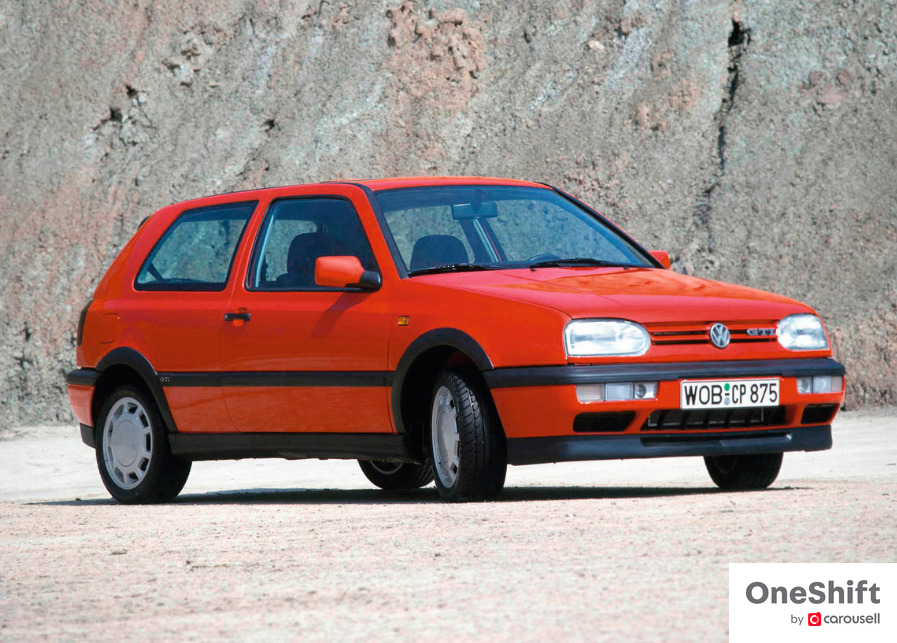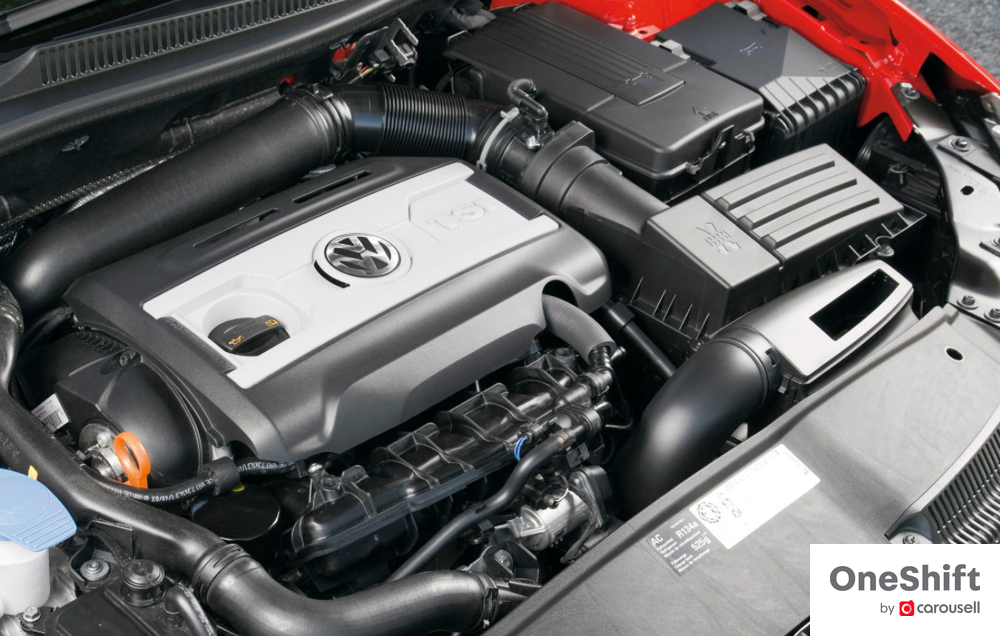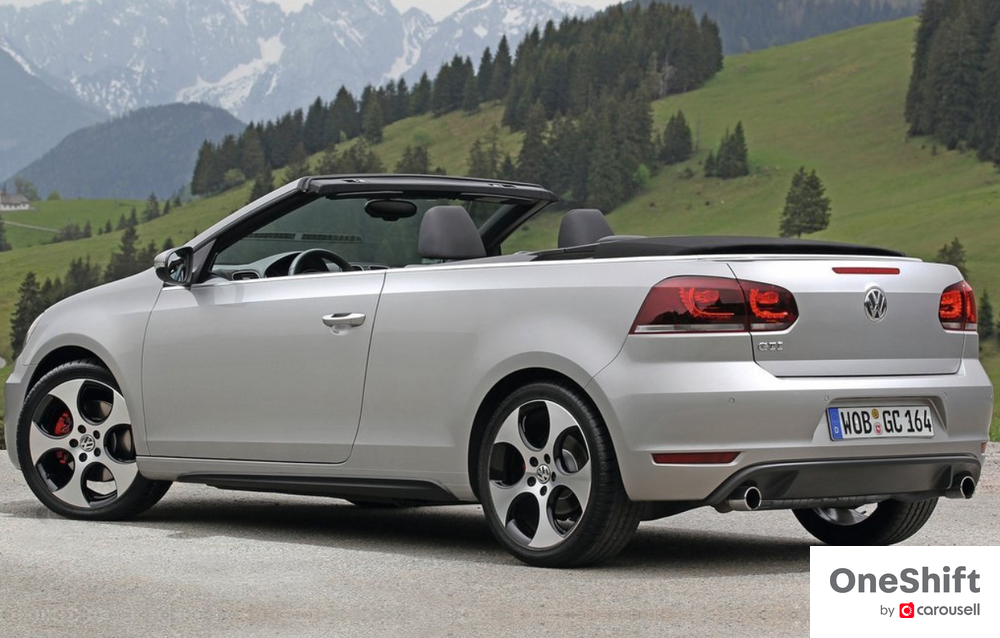OneShift Buyers’ Guide For The Volkswagen Golf GTI (Mk6)
Sixth generation of the people’s hot hatch can be the sweet spot for those who find the current-gen Mk8 GTI too digitised.


Volkswagen Golf GTI overview
These three iconic letters would have been forgotten if not for crucial board-level chatter back in 1974 - we wonder how this sporty version of the Golf would have panned out if it was named TS or GTS (two other names thrown in discussions) instead of GTI. Regardless, we cannot deny that the GTI went on to be the quintessential sporty hatchback for close to five decades, and counting…

The Mk1 Golf GTI was launched in 1976 with an initial plan to manufacture 5,000 units. It had a top speed of 182km/h, and featured quirky touches like tartan seats and a golf ball gear knob. Little did they expect the roaring success on a global scale - sales exploded to almost half a million deliveries. Volkswagen commenced production of the Mk2 Golf GTI in 1984, but had its work cut out given that its predecessor remained as the world’s most successful compact sports vehicle till today. This fell in a period where cars were required to fit a catalytic converter, which came as a blessing in disguise as early batches of 8-valve engine Mk2 Golf GTIs were replaced with more urgent 16-valve motors generating a healthy 127bhp.

VW explored with the Mk3 GTI by having a turbo diesel option, but eventually separated the naming convention and gave diesel-propelled units the GTD label. Critics often argued that the Mk3 was more sophisticated than playful, which defeated the purpose of a hot hatch. But this perception would then further cement the GTI’s characteristics as the sporty hatch for all occasions, exemplified by the Mk4 in 1998. It was loosely remembered as the last GTI with a naturally aspirated engine. It was not quite FD2 Civic Type R-nostalgic, but that paved the way for VW to launch an epic comeback with the turbocharged Mk5. It was punchy and effective on most stretches of tarmac, also partially due to the introduction of a cutting-edge dual-clutch DSG gearbox.
The Mk6 GTI was based largely on the Mk5 Golf GTI’s platform - no bad thing at all given the Mk5’s massive popularity. Engineers added an electronic differential lock (XDS) to tidy up the GTI’s already commendable handling. An “Edition 35” variant, akin to an in-house Stage 1 tune was offered to celebrate the product line’s 35th anniversary. A cabriolet version was also offered for the first time in a GTI.

VW layered the Mk7 GTI in 2013 with a tad more sophistication and performance. It was based on the MQB platform and was offered for the first time from the factory in two variants - the “standard” GTI delivered 217 Bhp, while the “Performance” version added 10 more horsepower and more notably a differential lock for the front axle. Now in its eighth iteration, the GTI refines the Mk7 GTI’s recipe and continues to be the performance benchmark for everyday usability, with a generous shower of digitisation.

Mk6 Volkswagen Golf GTI overview
This generation of GTI had big shoes to fill given the resounding success of the Mk5. Sure, it didn't single-handedly revive the nameplate from the ashes (effortlessly achieved by its predecessor), but mechanical enhancements made it a sharper driver’s tool. The Mk5’s EA113 engine was replaced by the punchier EA888 shared with the Mk3 2.0 TSI Volkswagen Scirocco, an electronic differential to keep corners tidy and a 3-stage adjustable damping system to amplify the GTI’s all-rounded capability.
What about the Singapore market?
Order books were open for the Mk6 Golf GTI as early as late 2008 (with Cat B COE closing in at a mouth-watering S$6,500 in December 2008), but sales ramped up properly in 2009. It has to be mentioned though that the local dealer was clearing its inventory for the Mk5 GTI in late 2008 (we could purchase one for as low as S$100k including COE!), so that could have caused some apprehension for the newer model. 2011 saw the introduction of the “Edition 35” as part of a mid-life refresh. A convertible version of the GTI arrived in 2013, which drew a lukewarm response judging by the lack of them roaming our roads a decade ago.

What to look out for: Engine & Gearbox
The Mk6 GTI’s timing belt requires replacement at 130,000km / every four years. Thus it should have been through at least three proper belt replacements. Coil packs often fail but they are inexpensive and not too laborious to replace. If the engine fails to reach peak boost at higher speeds, it could mean the diverter valve is faulty. The high pressure turbo hose could also be due for a replacement if there is performance loss, leading eventually to a turbo failure.
Perhaps the most crucial aspect to monitor will be the DSG transmission, which suffers from mechatronics failure, just like the Mk5 GTI. Some local units have had the entire gearbox replaced, but most would have replaced the mechatronics ECU. Service records should state this explicitly. Monitor for any lurches or judders from standstill.

Suspension & Brakes
The inner piano black portion of the Mk6 GTI’s “Detroit” / telephone dial rims could corrode over time, but we reckon that this is a timeless design worth refurbishing if previous owners have not been tempted by aftermarket rim offerings. If there are knocking noises on the move, rear bushings on the suspension could also wear off, which could also mean that alignment is off.

Bodywork & Interior
Cabin rattles are common, especially on the door panels, plastics around the head unit and air conditioning vents, and latching mechanism of the rear upper bench. Do also observe for liquid movements when opening and closing the doors, as water might get stuck within the door, leading to rust over time.
Operate the electric folding mirrors and watch for any mechanical failures. The mirrors themselves should also tilt downwards when the gear lever is shifted to reverse gear. Fit and fitment should be exemplary but do check for panel gaps around the door areas, which could point towards post-accident repairs. Rubber strips at the rear boot area under the third brake lights could also wear off, allowing water to seep right through into the boot’s carpeted area.

Are we missing out?
Customers in 2013 might not have missed out if they went for the quirky Golf GTI Cabriolet, which went on sale in Singapore but in hindsight a gung-ho move by the dealer that we appreciate. It was rare back then - some labelled it as a “compromised” GTI with increased weight and lack of chassis rigidity, but given how eccentric it looks, would you splash the cash if it ever appears in classifieds?
How much to spend
Early examples of the Mk6 Golf GTI arrived in 2009, and you can purchase them at a depreciation of around S$11k to S$13k per year. The last few batches of early 2009 Mk5 GTIs are going for slightly higher depreciation, so in terms of “value” it could make sense depending on how you look at it. Later batches (2012) are going for around S$14k per year, but these would also understandably be high mileage units (circa 130,000km). Most Mk6 GTIs would have been through some sort of aftermarket tune, which can have an impact on fuel consumption and reliability. We’d expect a unit to average around 10-11km/l on the combined cycle, but this is still highly dependent on its state of tune. Road tax for a 2.0-litre unit arrives at S$1,433 per year. OMV will hover around the high S$20k / low S$30k mark.
What we found

No expenses spared in terms of modification for this unit, listing at S$13,846 depreciation per year.

One with increasingly rare OEM telephone dial rims, 120,000km clocked.
Keen to acquire a Mk6 Golf GTI? Find more pre-loved examples on Carousell.
---
Selling your car? Whatever the reason, car you sell Carousell.


Get the Best Price for your used car
from 500+ dealers in 24 hours

- Convenient and Hassle-Free
- Consumer Protection
Transparent Process
With No Obligation








